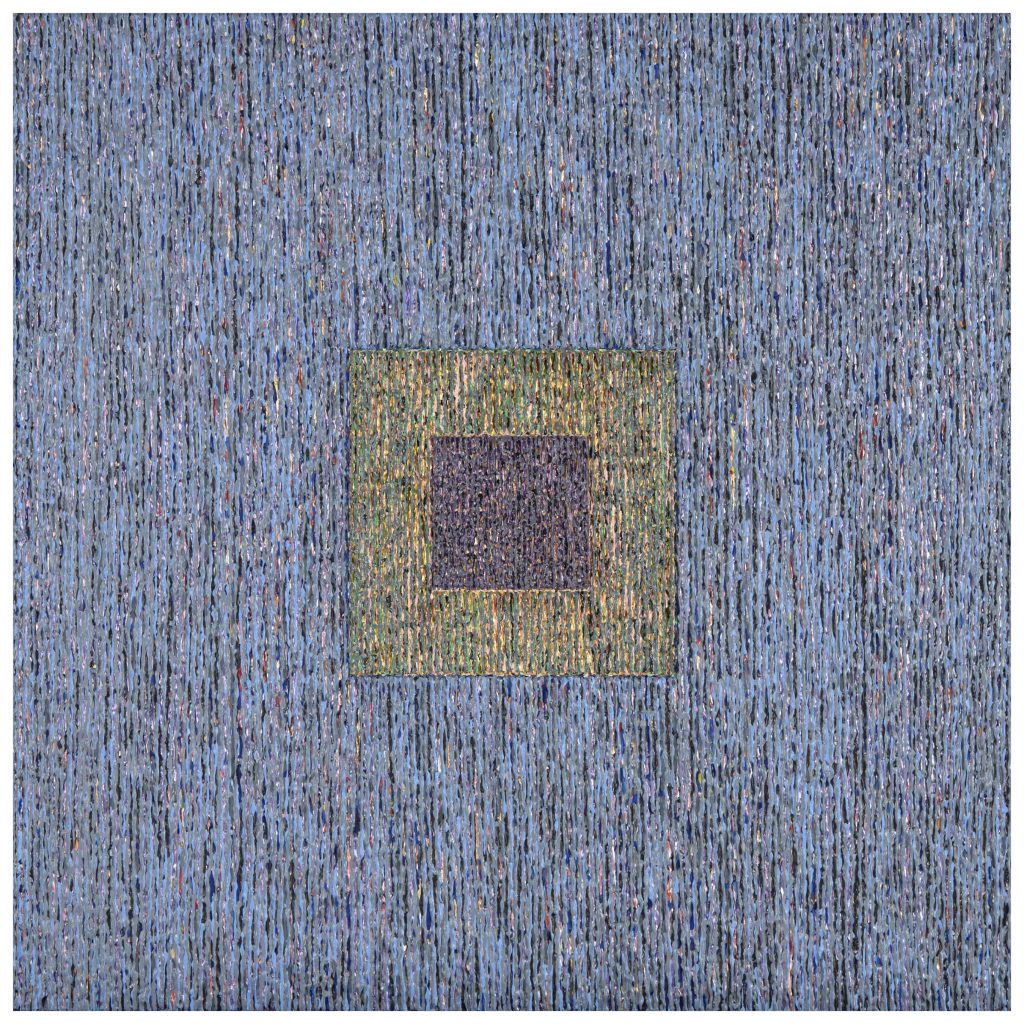Curated by Diana Sherlock, Mary Shannon Will: People, Places and Things is now available for viewing at Nickle Galleries. The exhibition includes almost 100 abstract ceramic sculptures and process-based paintings, drawings, digital prints and mixed-media works produced by established Calgary artist Shannon Will between 1968 to 2020. With deep gratitude to the generous lenders to the exhibition, Nickle Galleries has extended this exhibition to October 2021.
To book your visit, please email nickle@ucalgary.ca.
Mary Shannon Will: People, Places and Things brings together nearly 100 abstract paintings, drawings, digital prints, mixed-media works and ceramics produced by this senior Calgary between 1968 and 2020. The exhibition highlights how the artist uses recurring processes and procedures across a wide range of media to produce controlled yet intuitive works of art in response to the people, places and things in her life.
Trained as a potter at the University of Iowa, Shannon Will made functional studio pottery during the 1960s and early 1970s but chose not to pursue it as a career. Her earliest pots had already morphed into sculptures with anthropomorphic or expressionistic qualities. In other late-60s ceramic sculptures, hand-built and painted with bright automotive paints, she referenced California “funk” ceramics. During the early 1970s, she expanded into full colour, developing a bright palette on white earthenware ceramic forms that sensuously recall botanical and biological organisms.
In sharp contrast, her ceramic sculptures from 1980–85 are abstract geometric forms in which she combined altered cones, spheres, cubes, and cylinders to build meticulous constructions with highly complex, decorative surfaces. To determine colour choices, surface patterns, and mark making in these works, she applied idiosyncratic procedures but, unlike other conceptual artists of the time, her systems never completely overrode her own responses to process or materials.
Slowly, her interest in colour and surface decoration began to supersede three-dimensional form. The small china-painted tile, Could This Be A Small Surreptitious Rug? (1981), signals her shift towards the highly subjective systems-based process painting that continues to occupy her today. In Odeon Keepsake (1983-84), her method for choosing the colours and painting procedure was guided by a material object, an entrance ticket to a New York bar, that has been painted over.
By the mid-1980s, Shannon Will was concentrating mainly on prints, drawings, and paintings. In early two-dimensional constructivist-type works, forms common to her ceramics now flatten into overlapping shapes or intersecting planes of colour rendered in pointillism. Although abstract, these paintings have narrative titles—Seven Claps of Thunder or The Hat, Fallen Monument, Whirling Night Music—that suggest they are intuitive responses to the people, places and things that have shaped the artist’s experience and perception of the world in which she lives.
From the 1990s on, the modernist grid becomes the underlying structure for all of Shannon Will’s future work, but she repeatedly disrupts the grid’s autonomy and stability. This is most evident in the archival inkjet and mixed media works where grids of digital pixels glitch and dissolve under the artist’s subjective systems. In other examples, she plunks idiosyncratic found shapes in the centre of the picture plane, or varies her mark making to eschew lines for dots and dashes, or attaches Mactac, glass or mirrors to the work’s surface. Many of these works were also produced in series, revealing the diversity generated by a set of rules applied to materials used across similarly scaled works in the same medium.
From 2005 on Shannon Will returns exclusively to painting. The works are small, intimate and square. The artist still uses idiosyncratic systems based on a person, place or thing referenced in the title to select her colour choices: a guidebook description to a place the artist visited in India, the name of a place in New Mexico (the artist’s second home), or a close friend’s favorite and most disliked colours. Thousands of tiny coloured marks layer up in grids to build a surface into a form. A painting becomes an object, returning it to the unity of form and surface first seen in Shannon Will’s ceramic sculptures, grounded in the real material world, the people, places and things, that shape the artist’s subjectivity.
Thank you to the to the public, private and corporate lenders including the Alberta Foundation for the Arts, Canada Council Art Bank, University of Alberta Art Collection, University of Lethbridge Art Gallery, and to the private sponsors who have contributed to the exhibition and forthcoming catalogue, Frank Szfrankski and Tina Larson, Paul Kuhn and Esther Krasnow, Ray Todd, Bryan de Lottinville, Fred Greene and Lisa Dolittle, and Kevin Kanashiro.
Diana Sherlock, Curator
Diana Sherlock is a Calgary-based independent curator, writer and educator who’s recent curatorial projects include: New Maps of Paradise (2016) with Eric Moschopedis and Mia Rushton (Nickle Galleries, Calgary); In the making (2014–15) (Illingworth Kerr Gallery, Calgary and Kenderdine College Art Galleries, Saskatoon); Folly: Château Mathieu (2009–14) (Mathieu, Normandy, France; Esplanade Art Gallery, Medicine Hat and Nickle Galleries, Calgary).
A recording of Diana Sherlock’s November 19, 2020 curatorial talk about the exhibition is available here.

Winter Rain for Frank, 1994
Acrylic on wood. NG.1995.001.000.
Collection of Nickle Galleries, University of Calgary.